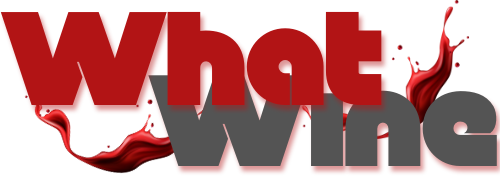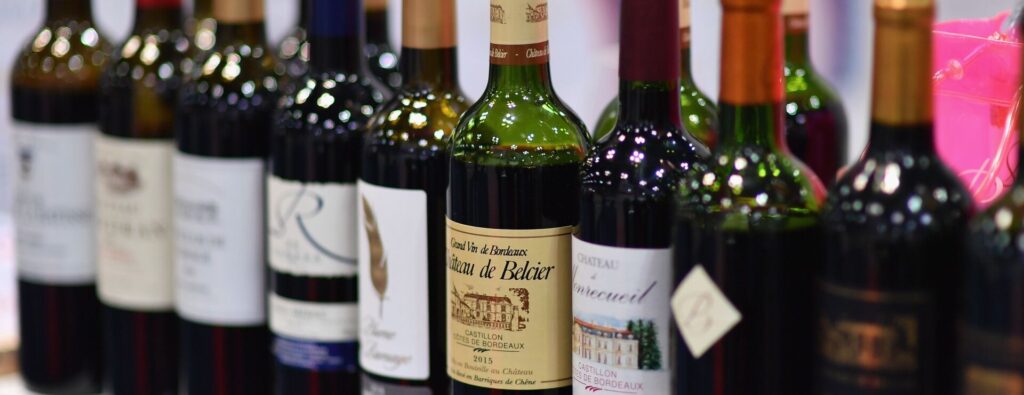In early May, thousands of fires ignited in vineyards before dawn in France's Burgundy region, as paraffin pots warmed the air to protect the tender buds from an unseasonably late frost.
Extreme weather can destroy a large portion of a crop, greatly impacting the surviving grapes which produce wine that may have a slightly different alcohol content than last year’s crop. This can vary from bottle to bottle depending on how long the wine has been in the barrel.
“Wine is an agricultural product,” says Kim Wilson, managing director of UK-based North South Wines.
Winegrowers say England’s tax writers failed to take agricultural fluctuations into account when drafting the post-Brexit bill, which now taxes each bottle of wine based on its alcohol content, not its volume.
UK officials say the new law will raise revenues without having to follow onerous EU rules and will help tackle health problems linked to heavy drinking. But winegrowers across the continent say the complex tax issues could cost them dearly — and they hope the UK’s July 4 election will help change the rules.
Hal Wilson, founder of Cambridge Wine Merchants, took inventory of a collection of around 2,000 different bottles that he sells to several small retailers in the UK and distributes to his restaurant and hotel partners there.
“I’ve found that 50 percent of new wines that come into our business have a different alcohol content than the current one,” he said, meaning the same wine from the same vineyard and the same winemaker has a different alcohol content from year to year.
This poses a particular challenge for UK wine importers grappling with a new alcohol tax regime, under which the same bottle of wine will be taxed at an unknown higher rate from one shipment to the next. There will be 30 possible tax rates, in the same year, rather than just one for any bottle of wine.
While the same new rules apply to other alcoholic beverages, such as beer, cider, and spirits, the production and alcohol content of these products are much less volatile and variable than wine.
“How can any company determine its costs when what it sells is 80 percent variable?” he asked. “It’s unworkable, it’s dysfunctional, it’s completely unfair.”
The wine industry has persuaded the current Conservative government, led by Prime Minister Rishi Sunak, to postpone the full extent of the force-based tax system until February 1, 2025. But Hal Wilson said that without further changes, the industry could be in disarray within seven months.
Industry groups hope this week's snap UK election will open the way for the exemption to be made temporary, although neither main political party has made commitments to industry to that end.
New duty system
Many supporters and opponents of the UK's alcohol tax system have said that the changes to the UK's alcohol tax system were among the early policy proposals adopted by the ruling Conservative Party to show the new options available to the country as a result of Brexit.
The new levy system was announced by then Chancellor of the Exchequer Sunak, who is now Prime Minister, as part of the UK Budget in the autumn of 2021, with the new approach due to come into effect on 1 August 2023.
“This will help end the era of cheap, high-strength drinks that can be detrimental to public health and enable problematic drinking,” he said during his Autumn 2021 Budget speech in Parliament.
Previously, there was no general tax on alcohol, but separate taxes were imposed on beer, cider, spirits and wine. In some cases, a drink of the same strength would face a different tax rate than a drink of the same strength in another category. Now, products of the same alcohol strength are generally subject to the same tax rate.
With few exceptions, the new rules state that the stronger the drink, the higher the tax.
“The political context is that policymakers are scrambling for things to do after Brexit,” said Dr Avik Bhattacharya, research director at the Social Market Foundation, which sponsored a 2019 policy paper called “Pour Decisions” that can take some of the credit for inspiring the new alcohol tax.
Scott Corvey, who authored the research while working at the Social Market Foundation, said the changes he proposed to the post-Brexit charging system were “probably one of the few areas where there was something really positive that you could do that you couldn’t do before”.
A key element of Korf's paper is the government's messaging – the government justifies it on the basis of public health costs rather than revenue collection. Korf's paper cites a 2003 Cabinet Office report on the social costs of drinking.
A 2016 review of the evidence raised questions about the methodology of the 2003 study, but even the 2016 Public Health England review put the annual cost of alcohol misuse at between 1.3% and 2.7% of annual GDP.
Supporters of the force-based system point to a rise in alcohol-related deaths in 2022 — those directly caused by alcohol, such as alcoholic liver disease. The number of alcohol-related deaths in the UK that year was 4.2% higher than in 2021 and 32.8% higher than in 2019, according to the UK Office for National Statistics.
Korff said he was happy to take credit for another element of the law, which is higher taxes on alcoholic beverages purchased in stores than on tap.
The government says the exemption benefits small businesses such as pubs, and so-called social drinking is less harmful to public health.
But the problem with wine is that it is now taxed by alcohol content rather than by volume of liquid, as it was previously taxed in the UK and as it is taxed in the EU.
Bhattacharya advocates for the change, so that higher taxes are imposed on wines with a higher alcohol content.
“Wine is facing this perverse incentive,” he said. “So this is not a completely illegitimate political issue, so I don't think wine is getting away with it here.”
Wine and spirits industry members say the law threatens to shut down small businesses, is not expected to generate additional revenue for the government, and has been justified with public health claims based on outdated data.
Thanks to industry lobbying, all wines with an alcohol content between 11.5% and 14.5% could be taxed as if they were 12.5% – adding a level of certainty for sellers and buyers, but again only until next February.
Chancellor of the Exchequer Gareth Davies said in a speech in parliament in March that Prime Minister Sunak's government was not interested in making the freeze permanent.
“Overall, these reforms simplify our tax obligations, and that is what Brexit is all about,” Davies said.
Several requests for comment from the conservative campaign headquarters went unanswered.
Wine is different
In winemaking, extreme weather conditions alter growing conditions and alcohol content. In a dry state, for example, the remaining grapes will have a higher sugar content – which also means a higher alcohol content in the resulting wine. Even the aging process tends to result in wines that become more alcoholic over time. Generally, wine is taken out of barrels or tanks and bottled at the winery several times a year.
“Wine stored in a barrel loses 5% of its volume through water evaporation. It is the water that evaporates, not the alcohol. The alcohol level of that liquid has changed from the time it enters the barrel until it leaves it,” said Hal Wilson.
For example, the alcohol content of the same wine bottled in February and then again in June might increase from 14.1 to 14.3 percent.
Here is a particular complication under the new policy: wines can now be labelled at 0.1%, rather than 0.5%, as is the norm in the EU.
There can be up to 30 different rates of duty on wine ranging from 11.5% to 14.5%. This is not required to be marked, but many countries that export their wine to the UK, particularly Australia and the US, already mark it at 0.1%.
“They are punishing the wine industry,” Kim Wilson said.
Traders say hiring will be under pressure and customer choice may be affected.
Wilson estimated she would need an additional 1.5 people to help her handle the changes administratively if she wanted to maintain her current import portfolio.
Hal Wilson (no relation) said he doesn’t have the staff to account for the “various costs” of the 2,000-plus unique bottle offerings his show requires. “I’m going to stop buying half the wines I buy right now,” he said.
But Bhattacharya, research director at the Social Market Foundation, is skeptical that a few points of tax would have an impact, given other uncertainties in the horticultural process.
“Man, if you’re making wine, there’s a lot of volatility,” he said. “Would taxes really make that much of a difference?”
“It will be,” says Miles Bell, CEO of the Wine and Spirits Trade Association.
“We think the complexity is great enough that enough companies will start doing less business, or becoming smaller, or going bankrupt,” he said.
uncertain times
Bell said the Wine and Spirits Trade Association is working with the Conservative government to continue to meet the needs of the wine industry.
The organisation had hoped that Labour would include the tariff freeze in its election manifesto ahead of the July 4 election, but that has not happened. The party did not respond to multiple requests for comment.
There is not much time left, regardless of which party is in power, Bill said. Merchants have to choose and order wine and spend money on the products they will offer next year.
Even if retailers absorb some of the cost, cutting their average profits by 25%, they will have to pass some of the increase on to consumers, said Hal Wilson. Inflation already makes consumers more price-sensitive, so even a small increase could dampen demand.
“You have a huge competitive market operating on very thin margins, and the government adds to that a huge lack of predictability in costs,” he said.
Regardless of the ruling party, the industry wants the interim agreement to tax all wines with an alcohol content of between 11.5% and 14.5% at a rate of 12.5% to become permanent, rather than expire.
“Anything else is just madness,” Wilson said.


